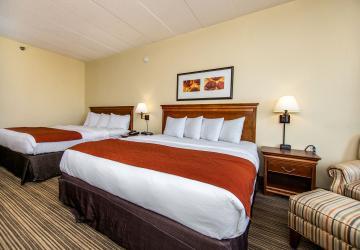A unique synthesis of urban and rural activity, Sioux Falls is the largest city in South Dakota. Located in the eastern portion of the state, Sioux Falls gets its name from the cascading waterfalls of the Big Sioux River, a relic of the last Ice Age from nearly 20,000 years ago. Home to more than 200,000 permanent residents, Sioux Falls was declared an official city in 1856. Locals and visitors enjoy a wide selection of quality eateries, including the Casa Del Rey Mexican restaurant, Famous Dave’s Barbeque, Granite City Brewery, Timber Lodge Steakhouse, and the Old Chicago gourmet pizzeria. An abundance of shopping is also available, from specialty gift dealers to local craft stores to plentiful farmer’s markets.
History
The city of Sioux Falls was originally inhabited by a wide variety of Native American tribes before European explorers first visited the area in the early 1700s. By the 1800s, the number of Europeans and Americans had exceeded that of the indigenous population. In 1856, two land development companies joined forces to organize widespread land claims around the falls area, encountering some measure of resistance and conflict from the native tribes. In the wake of the Dakota War of 1862, a military reservation dubbed Fort Dakota was established in what would later comprise downtown Sioux Falls. A boom in settlement and construction followed, leading to the incorporation of the Village of Sioux Falls in 1876 and the chartering of the City of Sioux Falls in 1883. The ensuing Dakota Boom saw a four-fold increase in the population by the close of the 1890s.
Economy & Commerce
Throughout the 1900s, Sioux Falls has enjoyed a steady increase in commerce, communications, and transportation. Agricultural industries have also continued to fuel the local economy. Since the late 1970s, the city’s populace has grown from 81,000 in 1980 to more than 150,000 as of 2007. Many believe this growth to be an indirect result of the transfer of the Citibank headquarters from New York to Sioux Falls, bringing with it an abundance of jobs and transplanted citizens. Low rates of crime and unemployment contribute to the city’s reputation as one of the most favorable places in which to live in South Dakota.
Culture & Recreation
An abundance of scenic parks, including Falls Park, Sherman Park, and Great Bear Recreation Park, promote a wide variety of recreational activities among locals. Sioux Falls offers an extensive selection of restaurants and shopping centers. Regional musical festivals, art displays, and literary events take place year-round.
















